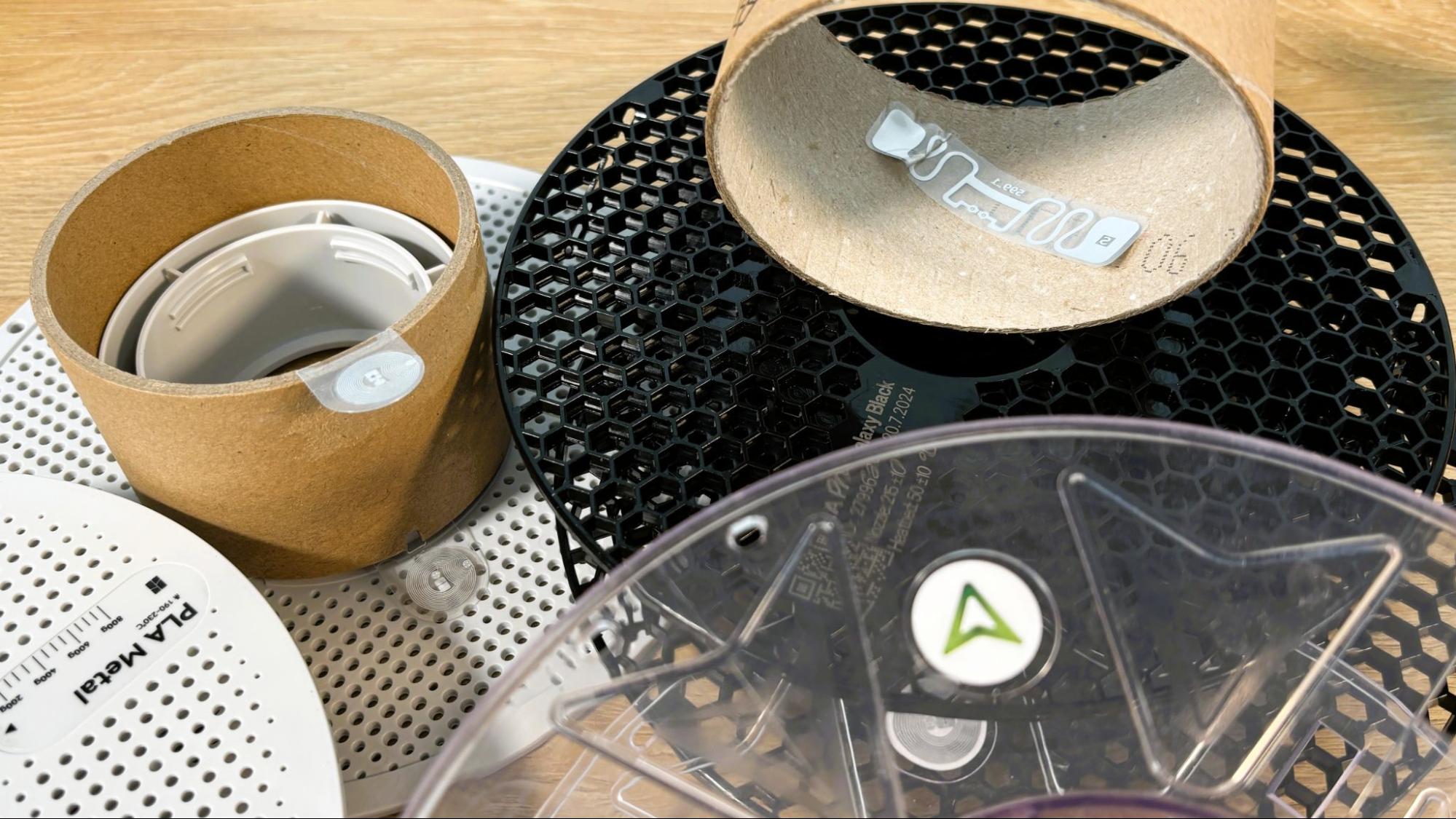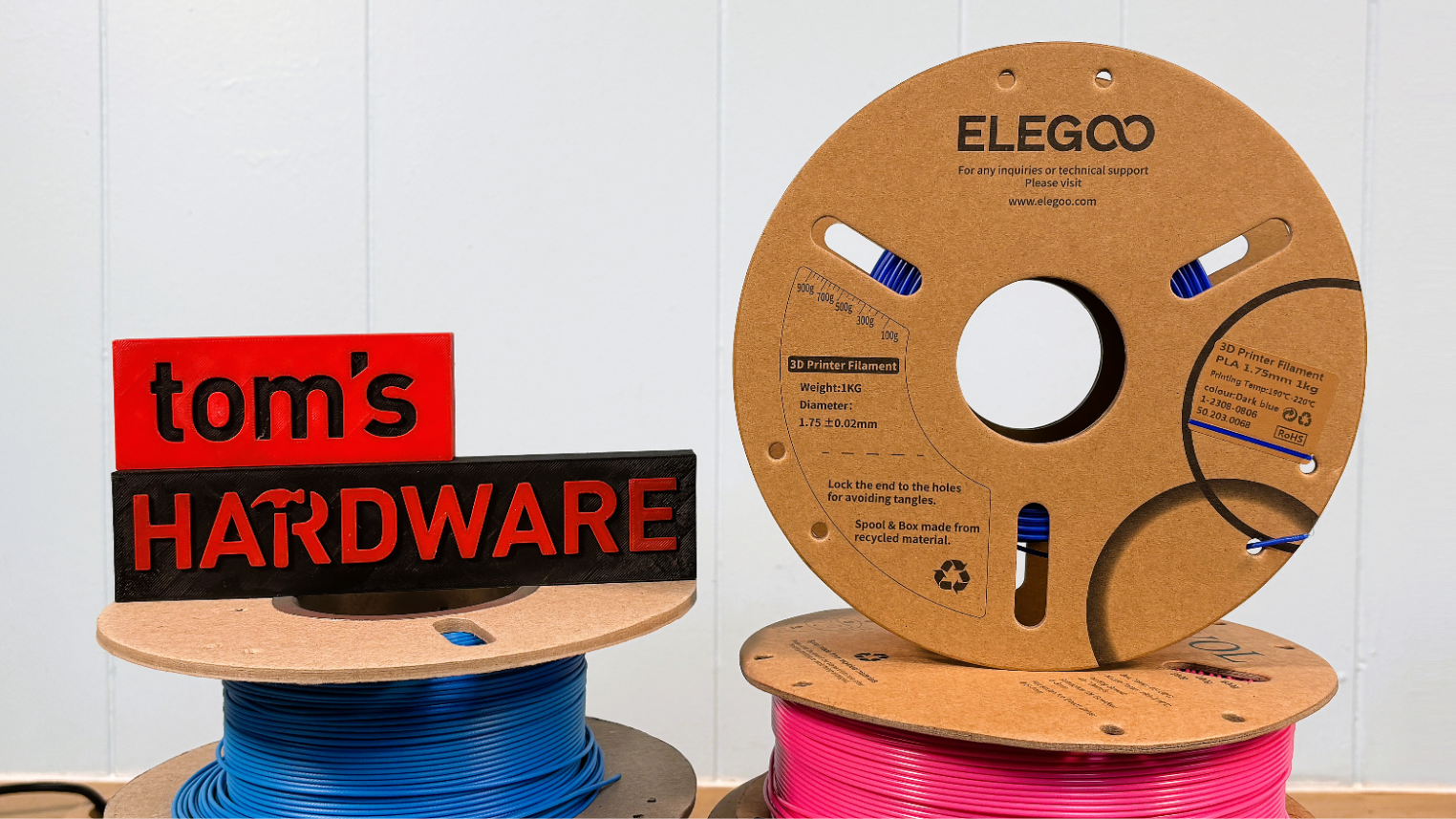Elegoo has confirmed that full color printing is coming to the Centauri Series of FDM 3D printers by the third quarter of 2025. The highly anticipated Automatic Filament Switching System will be the first to feature open-source RFID (Radio Frequency Identification) technology, a move that could shake up filament management in the 3D printing industry.
Bambu Lab was the first to introduce RFID-tagged spools to consumer-grade printers. The tags, taped to the spool’s inner cardboard core, store information on the material’s type and color for the printer to read. This information is then transmitted to the slicer, saving the user the extra steps of squinting at spools, writing down print temperatures, and then manually configuring materials on their computer. Creality and Anycubic followed suit with the introduction of their own multimaterial 3D printers and house lines of filaments. However, each system can only read its own RFID tag and is encrypted to prevent third-party access.

This system of convenience has misguided many new Bambu Lab users into believing their printers can only operate with proprietary filament. An open-source system would encourage users to step outside their walled garden to explore the vast world of filament created by other manufacturers.
Elegoo’s RFID tags will embed information about the type, color, brand, and remaining weight of the spools with a rewritable storage tag. The data structure has been posted to GitHub, and Elegoo has invited the community at large to freely create or modify compatible filament products. The company stated in a press release that it aims to promote cross-brand compatibility and the adoption of industry standards.
To refine the system, Elegoo is actively seeking feedback on tag structure and development directions through GitHub issues and social media comments. The company emphasizes that community input will be key to building a flexible, intelligent, and open RFID ecosystem.
“As we prepare to launch this innovative system, we’re committed to building it with the community,” Elegoo stated. “Together, we can unlock new possibilities for the future of 3D printing.”
Prusa Research also uses RFID tags in their spools, but only for internal quality control tracking. A QR code lasered onto each spool of Prusament allows customers to track their spool to a website and discover the filament’s production date, manufacturing location, tolerance specs, weight, length, and best print settings. This has led to speculation on the internet that Prusa Research could easily implement its own tagging system for the MMU3 and tool-swapping Prusa XL. Joseph Prusa is widely known as a supporter of Open Source.
Universally tagged spools – or the ability to add tags to spools you already own – would make slicing multicolor prints much easier. I often need to load filament and then take a photo of it in the AMS – or my Prusa XL’s spool holders – then refer to the photo to configure the slicer. Worse yet, when files are pre-colored by the designer, I often need to rearrange the spools in the machine to match the model's palette.

 6 months ago
160
6 months ago
160








 English (US) ·
English (US) ·